Optimal Configuration of Integrated Energy System Based on Energy-Conversion Interface
Abstract
:1. Introduction
2. Energy-Conversion Interface Model
2.1. Simple Input–Output Coupling Model
2.2. Complex Input–Output Coupling Model
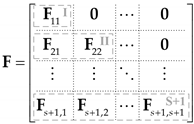
3. Optimal Configuration Model of Energy-Conversion Interface
3.1. Objective Function
3.1.1. Economic Performance
3.1.2. Energy-Utilization Efficiency
3.2. Restrictions
3.2.1. Energy-Conservation Constraints
3.2.2. Device-Installation Constraints
3.2.3. Device-Operation Constraints
3.2.4. Energy-Dispatch Constraints
4. Case Analysis
4.1. Campus Energy-Conversion-Interface Model
4.2. Case Data
4.3. Result Analysis
4.3.1. Configuration Result
Economic Analysis
Energy-Use Efficiency Analysis
4.3.2. Sensitivity Analysis
4.3.3. Weighted System Optimization
5. Conclusions
Author Contributions
Conflicts of Interest
Appendix A
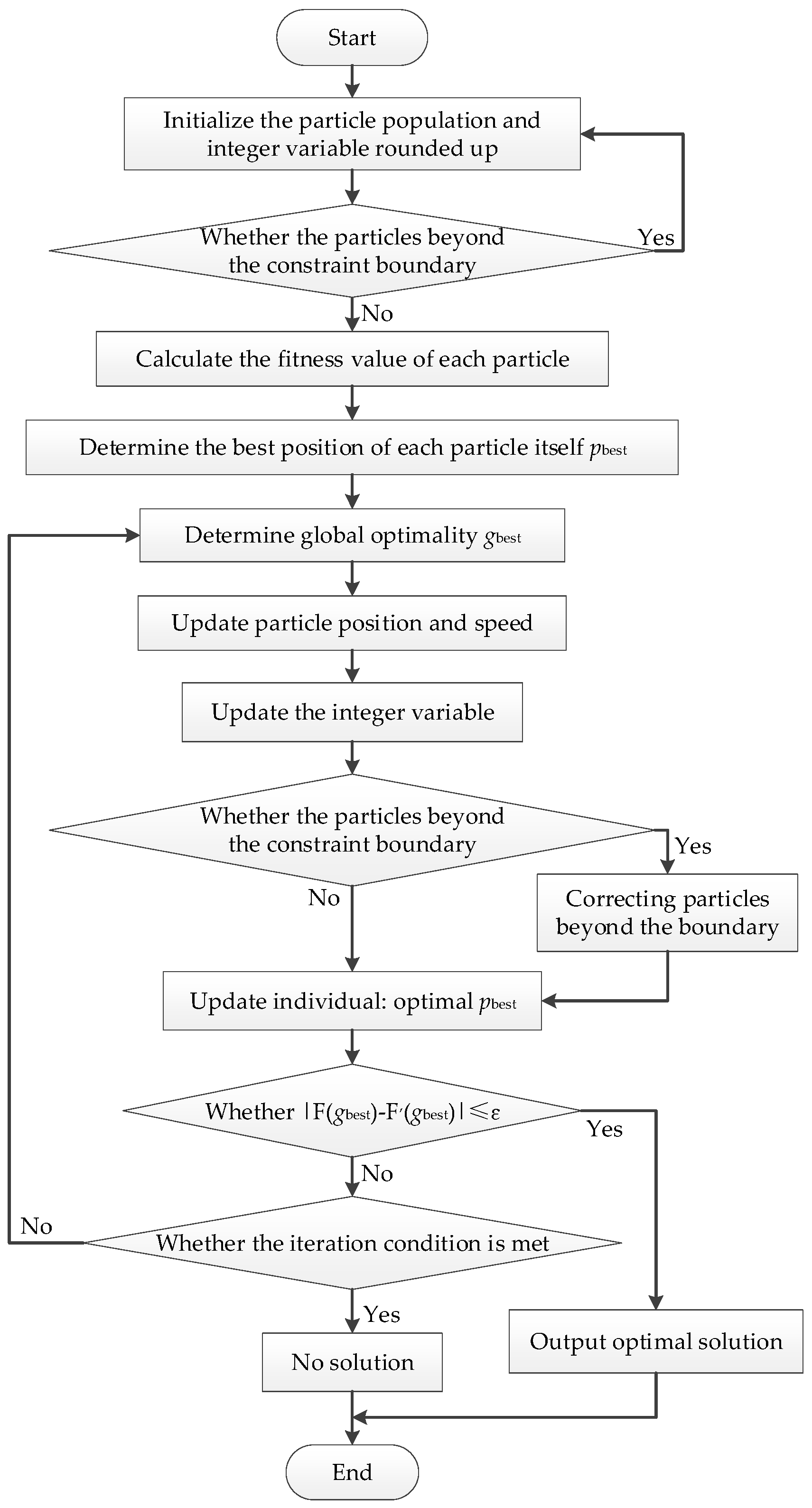
Appendix B
| Type | Output Rating (kW) | Conversion Coefficient | Investment Cost (Yuan/kW) | Operating and Maintenance Cost (Yuan/kW) | Durable Years | |||
|---|---|---|---|---|---|---|---|---|
| Power | Thermal | Power | Thermal | |||||
| GT | 1 | 3500 | 6000 | 0.28 | 0.48 | 15,428,000 | 0.06 | 30 |
| 2 | 4600 | 7800 | 0.30 | 0.50 | 19,710,000 | |||
| 3 | 5200 | 8300 | 0.30 | 0.48 | 21,931,520 | |||
| 4 | 7520 | 10,400 | 0.34 | 0.47 | 29,762,000 | |||
| ICE | 1 | 800 | 1460 | 0.15 | 0.28 | 4,422,400 | 0.06 | 30 |
| 2 | 534 | 780 | 0.15 | 0.22 | 3,336,000 | |||
| WB | 900 | 0.8 | 600,000 | 0.003 | 15 | |||
| HP | 2000 | 3.5 | 6,000,000 | 0.007 | 20 | |||
| GB | 3100 | 0.9 | 2,480,000 | 0.004 | 20 | |||
| EC | 1000 | 3 | 1,000,000 | 0.0097 | 15 | |||
| AC | 2700 | 1.2 | 4,968,000 | 0.008 | 30 | |||
| P2G | 1000 | 0.5 | 4,800,000 | / | 8 | |||
| ES | 12 | 0.95 | 4,000 | / | 5 | |||
| TS | 120 | 0.95 | 24,480 | / | 15 | |||
| CS | 120 | 0.95 | 24,000 | / | 15 | |||
| Electricity Price (Yuan/kWh) | Natural Gas Price (Yuan/m3) | Fuel Oil Price (Yuan/kg) | |
|---|---|---|---|
| Purchase | Sale | ||
| 0.83 (9–13, 17–19 h) | 0.65 (9–13, 17–19 h) | 2.67 | 2.2 |
| 0.49 (8–10, 14–16, 20–22 h) | 0.38 (8–10, 14–16, 20–22 h) | ||
| 0.17 (1–7 h) | 0.13 (1–7 h) | ||
References
- Zheng, J.H.; Chen, J.J.; Wu, Q.H.; Jing, Z.X. Multi-objective optimization and decision making for power dispatch of a large-scale integrated energy system with distributed DHCs embedded. J. Appl. Energy 2015, 154, 369–379. [Google Scholar] [CrossRef]
- Nord, N.; Qvistgaard, L.H.; Cao, G. Identifying key design parameters of the integrated energy system for a residential Zero Emission Building in Norway. J. Renew. Energy 2016, 87, 1076–1087. [Google Scholar] [CrossRef]
- Zhai, X.Q.; Wang, R.Z.; Dai, Y.J.; Wu, J.Y.; Ma, Q. Solar integrated energy system for a green building. J. Energy Build. 2007, 39, 985–993. [Google Scholar] [CrossRef]
- Bahrami, S.; Safe, F. A financial approach to evaluate an optimized combined cooling, heat and power system. J. Energy Power Eng. 2013, 5, 352–362. [Google Scholar] [CrossRef]
- Singh, R.K.; Goswami, S.K. Optimum siting and sizing of distributed generations in radial and networked systems. J. Electr. Power Compon. Syst. 2009, 37, 127–145. [Google Scholar] [CrossRef]
- Xu, Z.B.; Wang, G.; Ouyang, C.M. Configuration of building integrated energy system considering subsidy of CHP facilities. J. Renew. Energy Resour. 2018, 36, 1806–1811. [Google Scholar]
- Li, C.Z.; Shi, Y.M.; Huang, X.H. Sensitivity analysis of energy demands on performance of CCHP system. J. Energy Convers. Manag. 2008, 49, 3491–3497. [Google Scholar] [CrossRef]
- Ress, M.; Wu, J.; Awad, B. Steady statc flow analysis for integrated urban heat and power distribution networks. In Proceedings of the 44th International Universities Power Engineering Conference (UPEC), Glasgow, UK, 1–4 September 2009; pp. 1–5. [Google Scholar]
- Rezvan, A.T.; Ghaneh, N.S.; Gharehpetian, G.B. Optimization of distributed generation capacities in buildings under uncertainty in load demand. J. Energy Build. 2013, 57, 58–64. [Google Scholar] [CrossRef]
- Yang, D.Y.; Xi, Y.F.; Cai, G.W. Day-Ahead Dispatch Model of Electro-Thermal Integrated Energy System with Power to Gas Function. Appl. Sci. 2017, 7, 1326. [Google Scholar] [CrossRef]
- Thieblemont, H.; Haghighat, F.; Moreau, A. Thermal Energy Storage for Building Load Management: Application to Electrically Heated Floor. Appl. Sci. 2016, 6, 194. [Google Scholar] [CrossRef]
- Ruan, Y.; Liu, Q.; Zhou, W.; Firestone, R.; Gao, W.; Watanabe, T. Optimal option of distributed generation technologies for various commercial buildings. J. Appl. Energy 2009, 86, 1641–1653. [Google Scholar] [CrossRef]
- Wang, J.J.; Jing, Y.Y.; Zhang, C.F.; Zhang, X.T.; Shi, G.H. Integrated evaluation of distributed triple-generation systems using improved grey incidence approach. J. Energy 2008, 33, 1427–1437. [Google Scholar] [CrossRef]
- Bai, M.K.; Wang, Y.; Tang, W.; Wu, C.; Zhang, B. Day-ahead optimal dispatching of regional integrated energy system based on interval linear programming. J. Power Syst. Technol. 2017, 41, 3963–3970. [Google Scholar]
- Vahid, D.; Mohsen, S.; Seyed, S.M. Optimal bidding strategy for an energy hub in energy market. J. Energy 2018, 148, 482–493. [Google Scholar]
- Christos, D.K.; Simone, B.; Iakovos, M.; Elias, B.K. Occupancy-based demand response and thermal comfort optimization in microgrids with renewable energy sources and energy storage. J. Appl. Energy 2016, 163, 93–104. [Google Scholar] [Green Version]
- Vahid, D.; Mohsen, S.; Seyed, S.M. Smart distribution system management considering electrical and thermal demand response of energy hubs. J. Energy 2019, 169, 38–49. [Google Scholar]
- Paul, M.N.; Rudy, R.N.; Bart, D.S.; Gordon, L.; Seán, M.L. Distributed MPC for frequency regulation in multi-terminal HVDC grids. J. Control Eng. Pract. 2016, 46, 176–187. [Google Scholar]
- Christos, D.K.; Simone, B.; Iakovos, M.; Elias, B.K. Grid-Connected Microgrids: Demand Management via Distributed Control and Human-in-the-Loop Optimization. J. Adv. Renew. Energ. Power Technol. 2018, 2, 315–344. [Google Scholar]
- Shi, J.; Xu, J.; Zeng, B.; Zhang, J. A bi-level optimal operation for energy hub based on regulating heat-to-electric ratio mode. J. Power Syst. Technol. 2016, 40, 2959–2966. [Google Scholar]
- Li, H.R.; Gao, Y.L.; Li, J.M. A particle swarm optimization algorithm with the strategy of nonlinear decreasing inertia weight. J. Shangluo Univ. 2007, 21, 16–20. [Google Scholar]
- Lu, W.; Zhang, S.J.; Xiao, Y.Z. Determination of thermoelectric ratio in distributed cogeneration. In Proceedings of the Chinese Society of Engineering Thermophysics Engineering Thermodynamics and Energy Utilization Symposium, Chongqing, China, 1 October 2006; pp. 336–342. [Google Scholar]
- Li, P. Rational determination to heat and power ratio for distributed CHP plant. J. Gas Turbine Technol. 2005, 18, 43–46. [Google Scholar]
- Zeng, M.; Han, M.; Li, R.; Li, Y.F.; Peng, L.L.; Li, N. Multi-energy synergistic optimization strategy of micro energy internet with supply and demand sides considered and its algorithm utilized. J. Power Syst. Technol. 2017, 41, 409–417. [Google Scholar]
- Lu, W. Optimal Planning of Distributed CCHP System in Urban Energy Environment. Master’s Thesis, Institute of Engineering Thermophysics, Chinese Academy of Sciences, Beijing, China, 2007. [Google Scholar]
- Bai, X.; Zeng, M.; Li, Y.; Long, Z. The model and algorithm of thermoelectric collaborative planning of regional energy supply network. J. Power Syst. Prot. Control 2017, 45, 65–72. [Google Scholar]
- Li, L. Study of Economic Operation in Microgrid. Master’s Thesis, North China Electric Power University, Beijing, China, 2011. [Google Scholar]
- Cui, P.C.; Shi, J.Y.; Wen, F.S.; Sun, L.; Dong, Z.Y.; Zheng, Y.; Zhang, R. Optimal energy hub configuration considering integrated demand response. J. Electr. Power Autom. Equip. 2017, 37, 101–109. [Google Scholar]
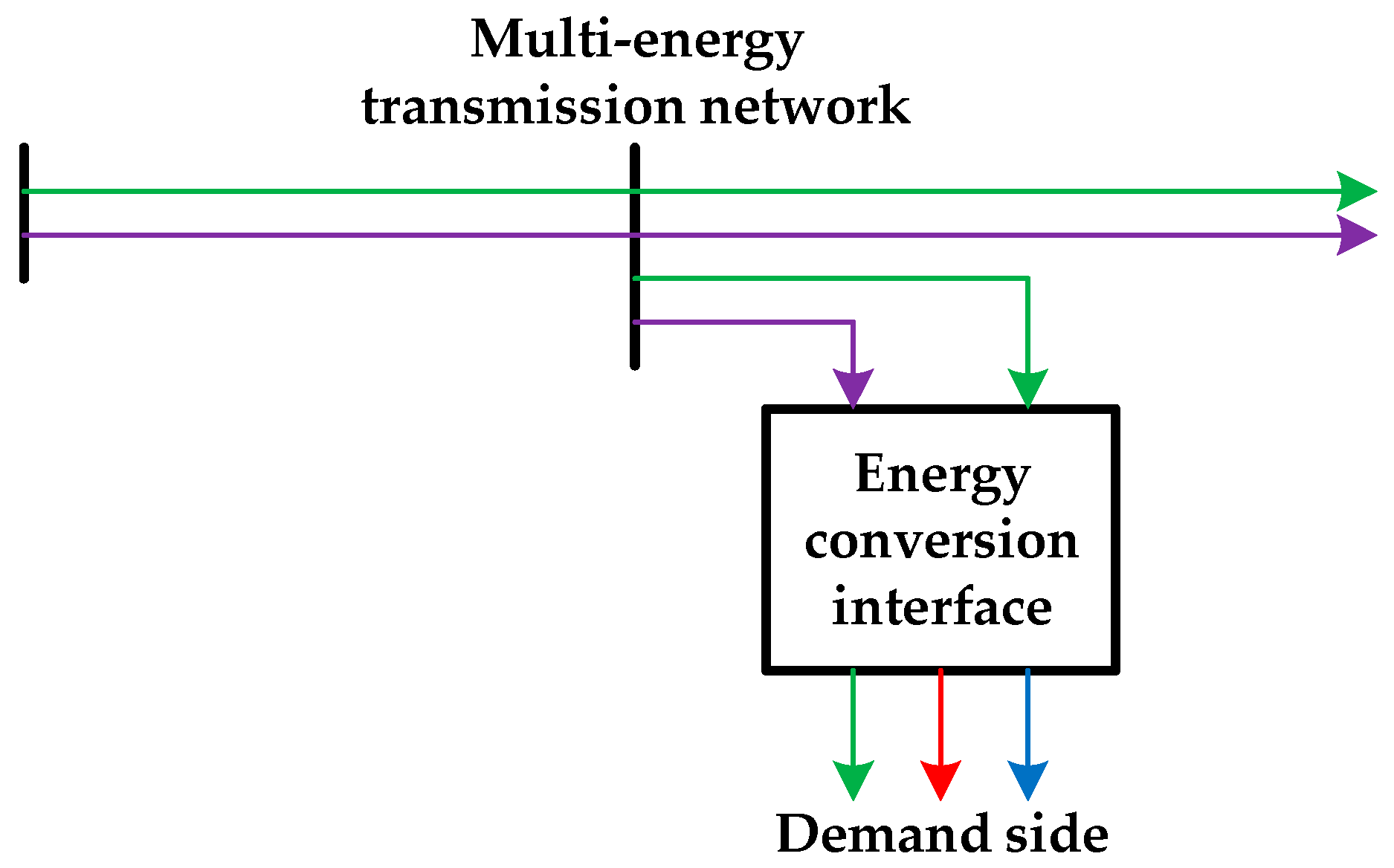
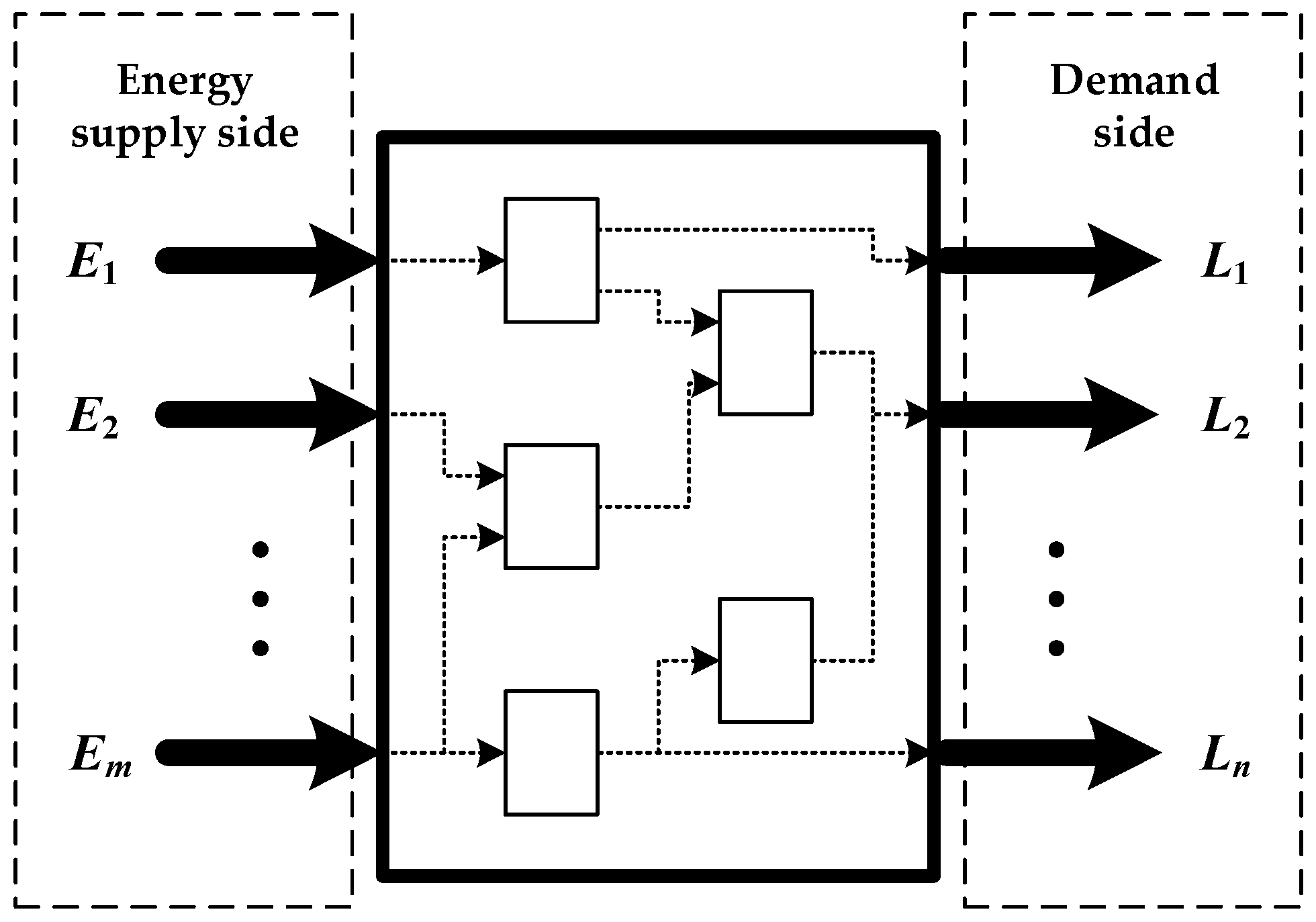


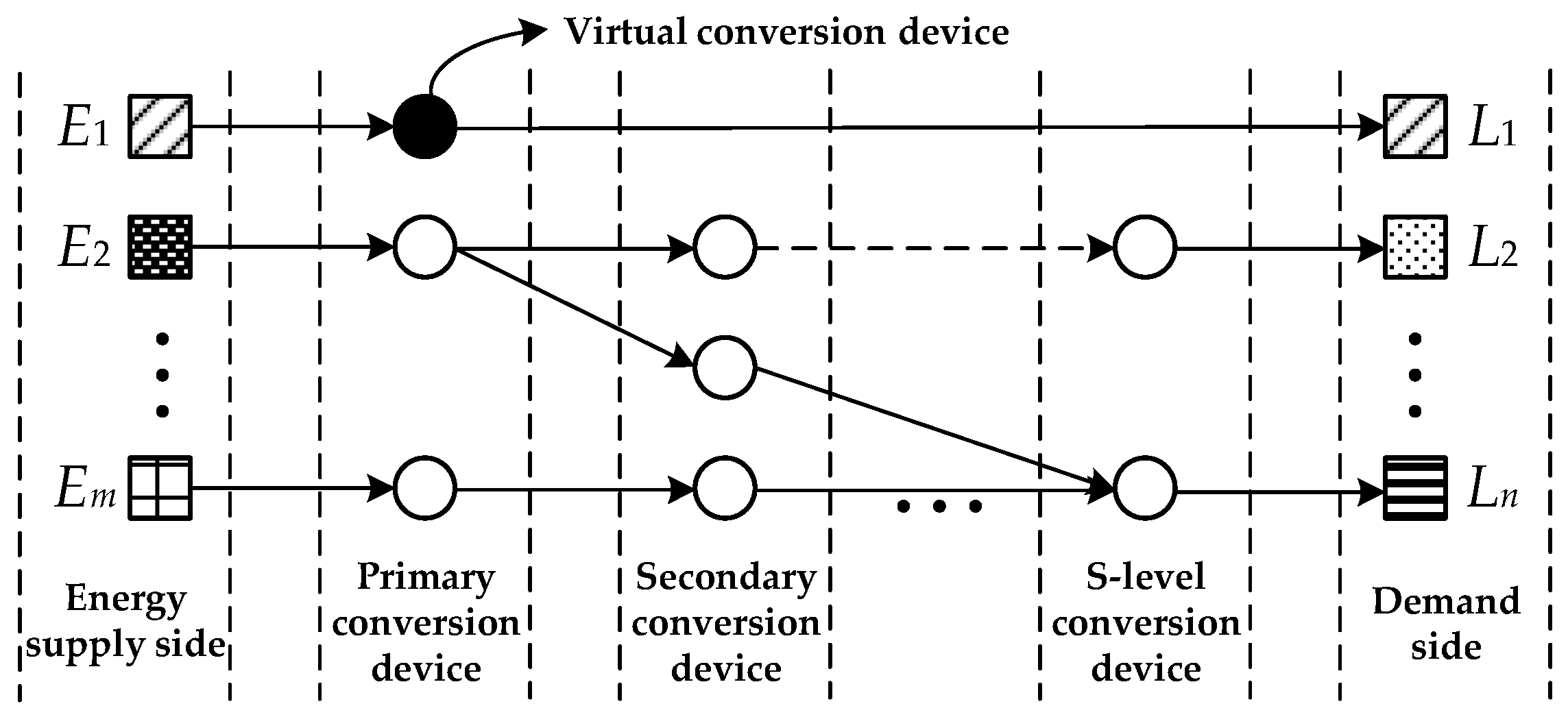
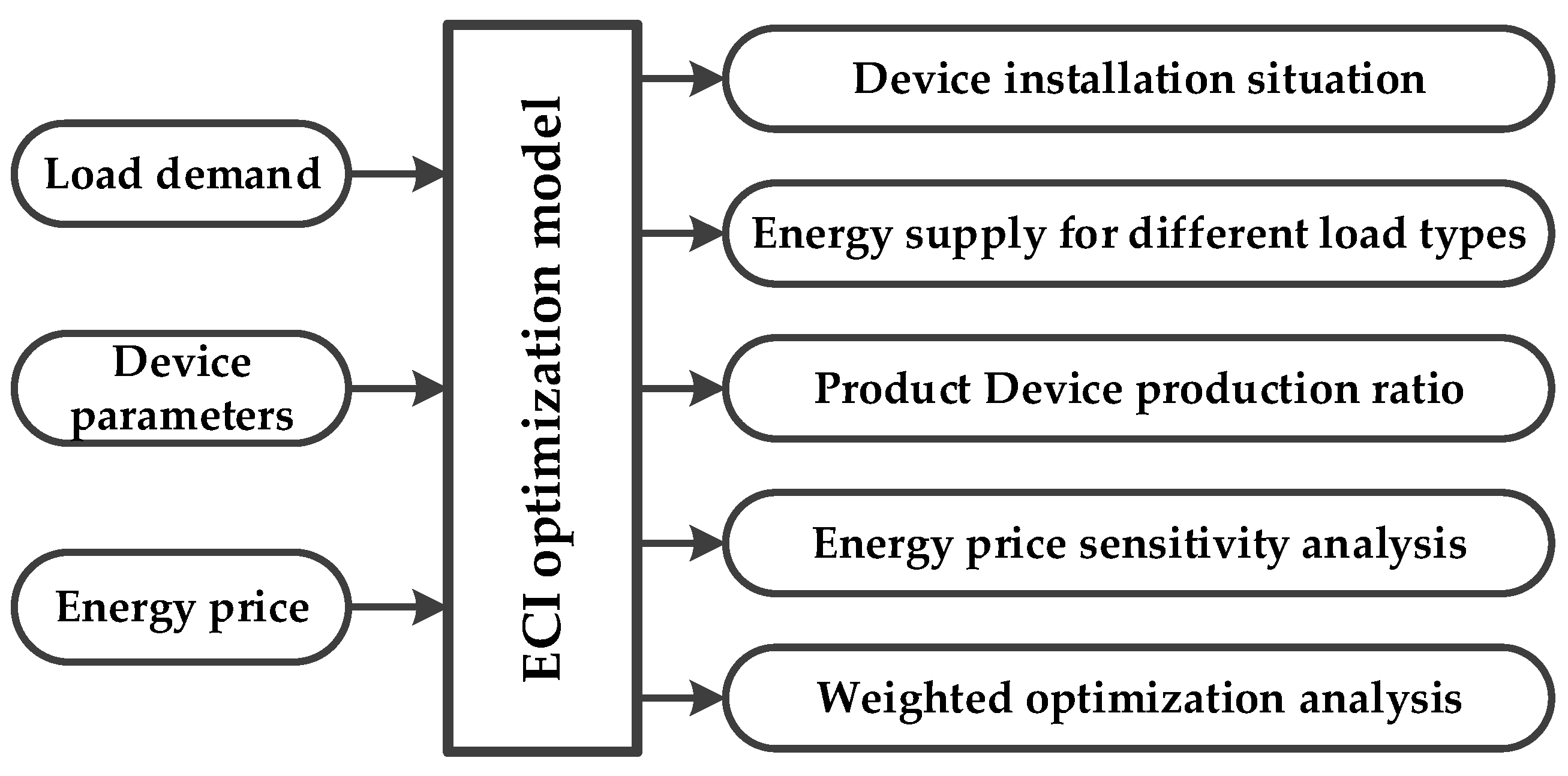
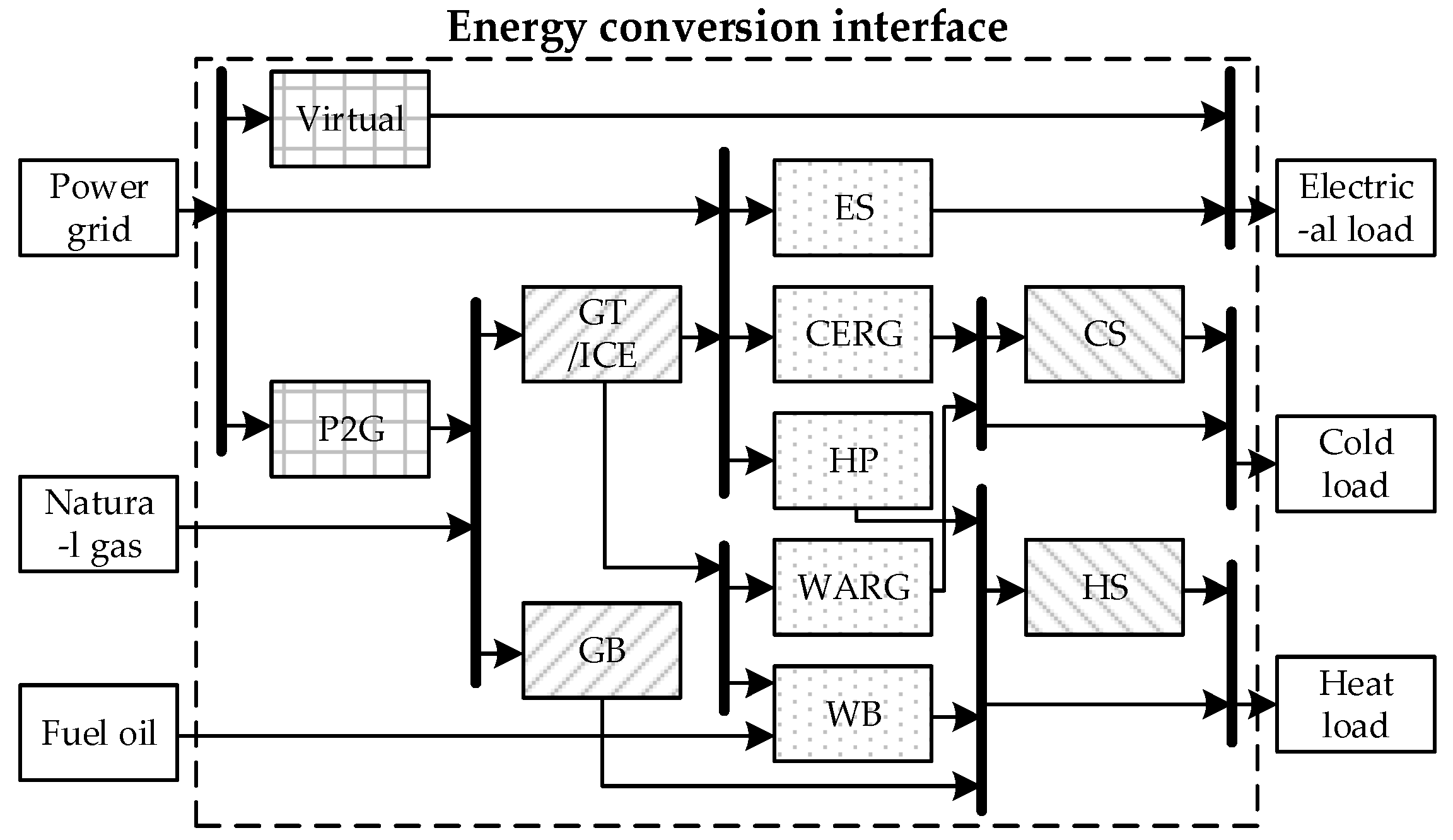
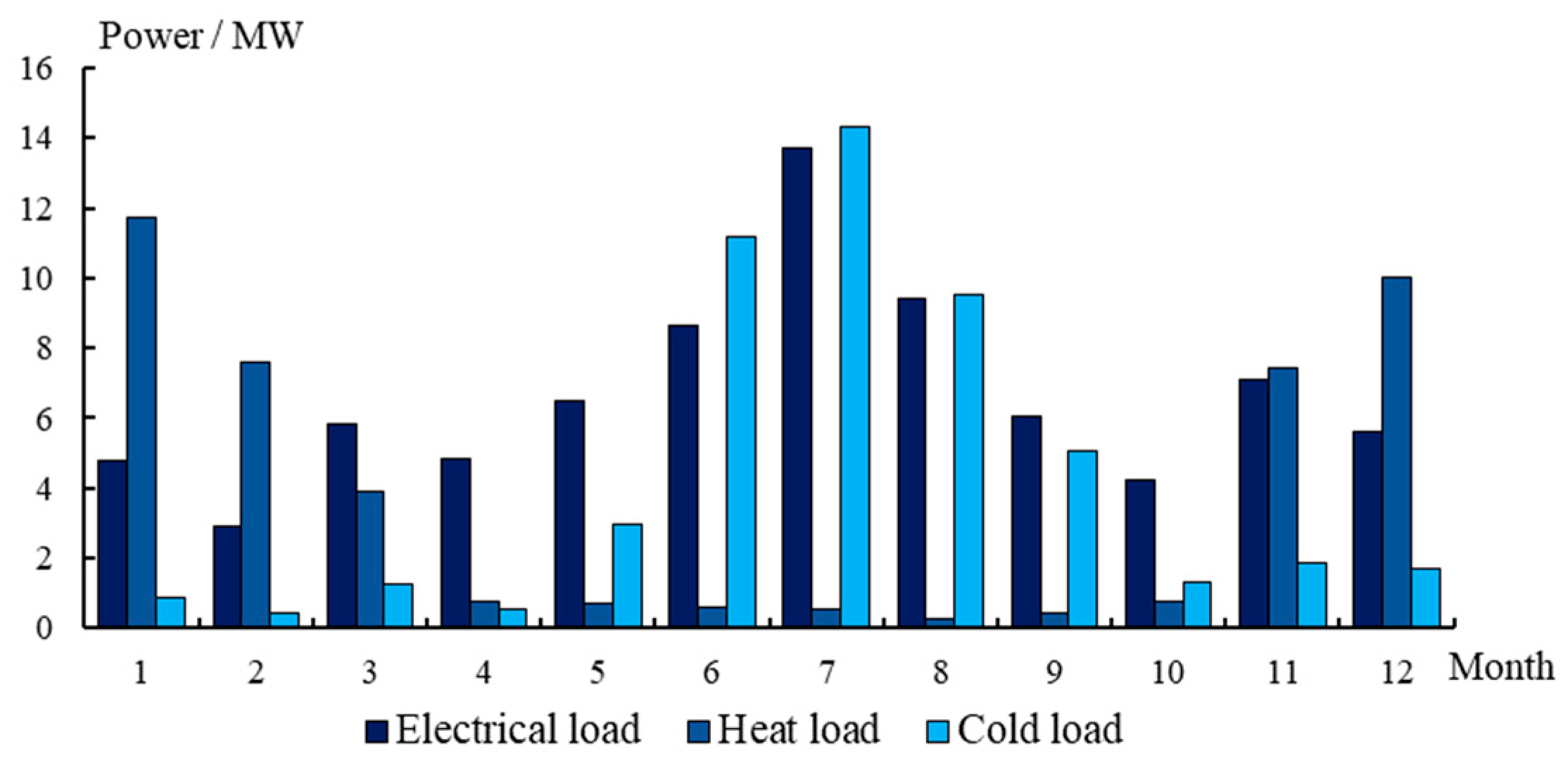

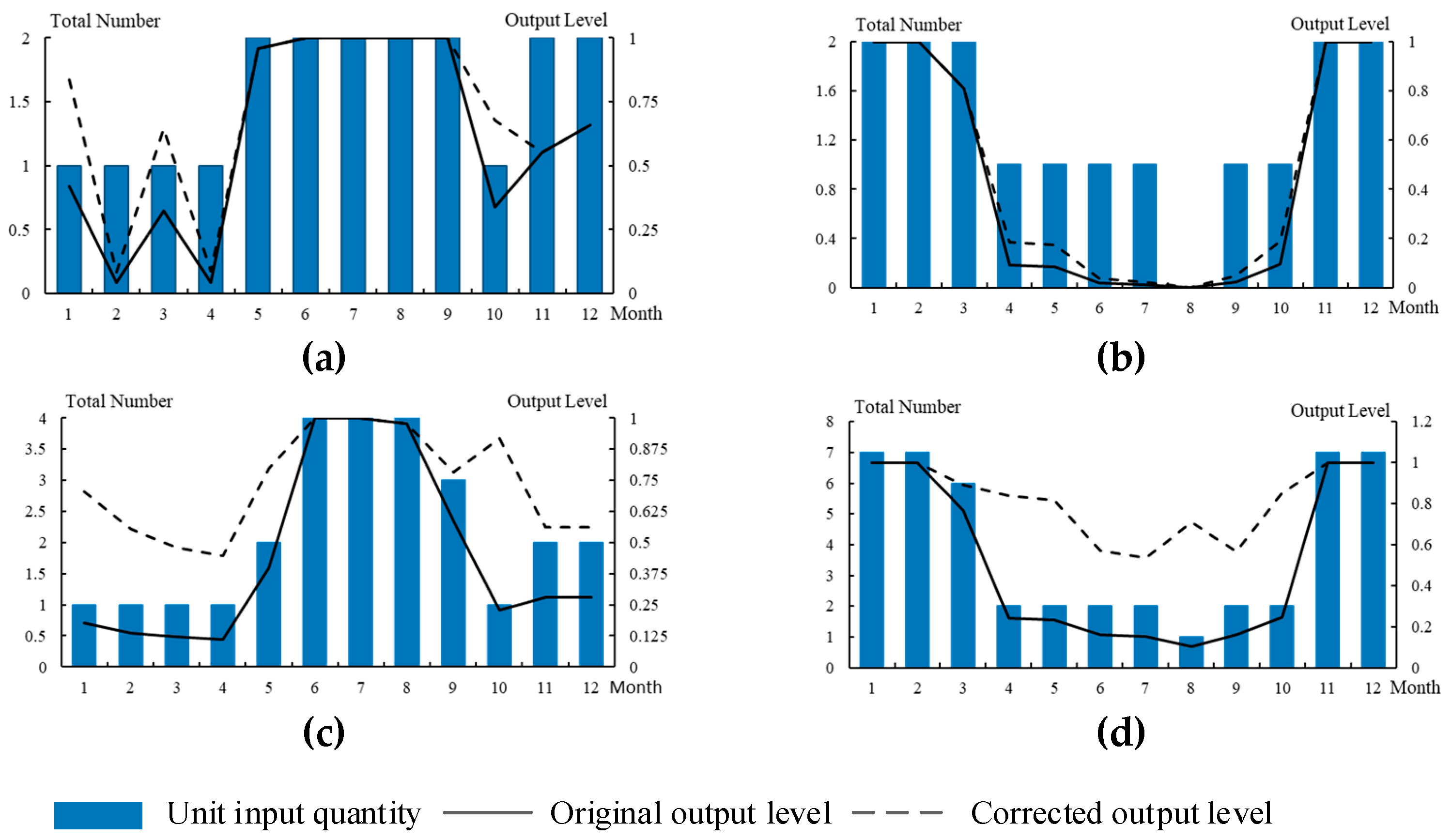
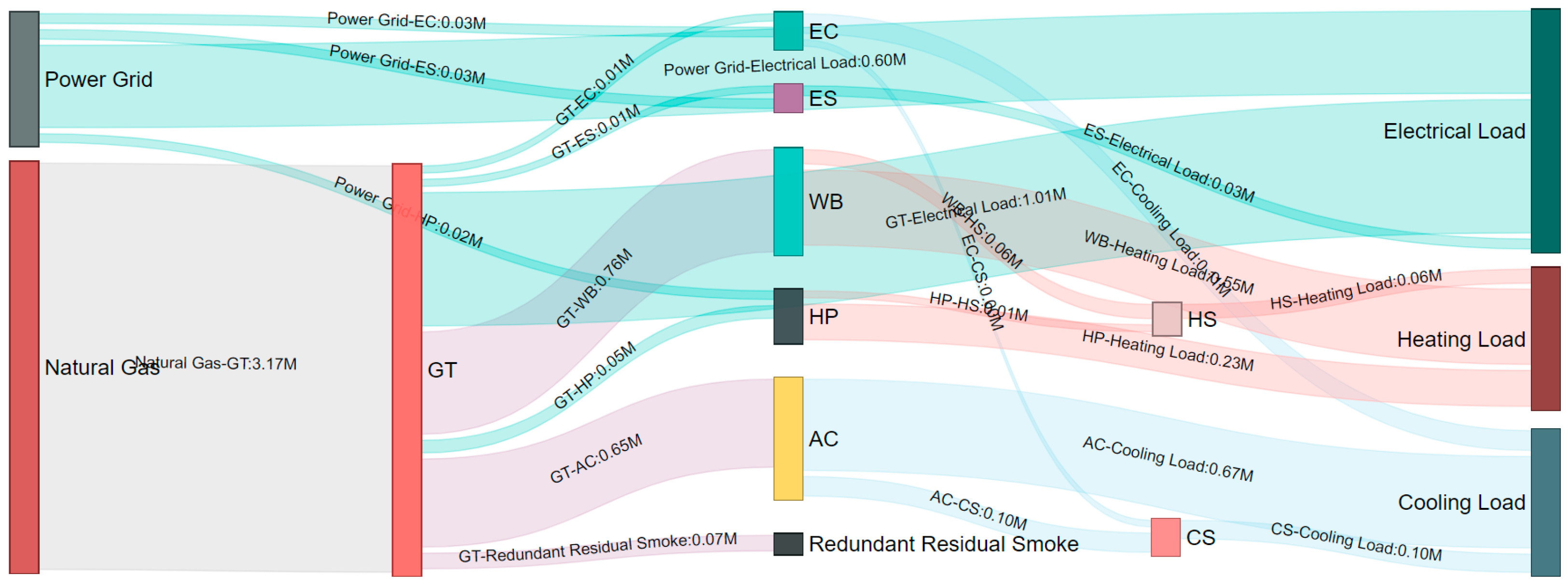


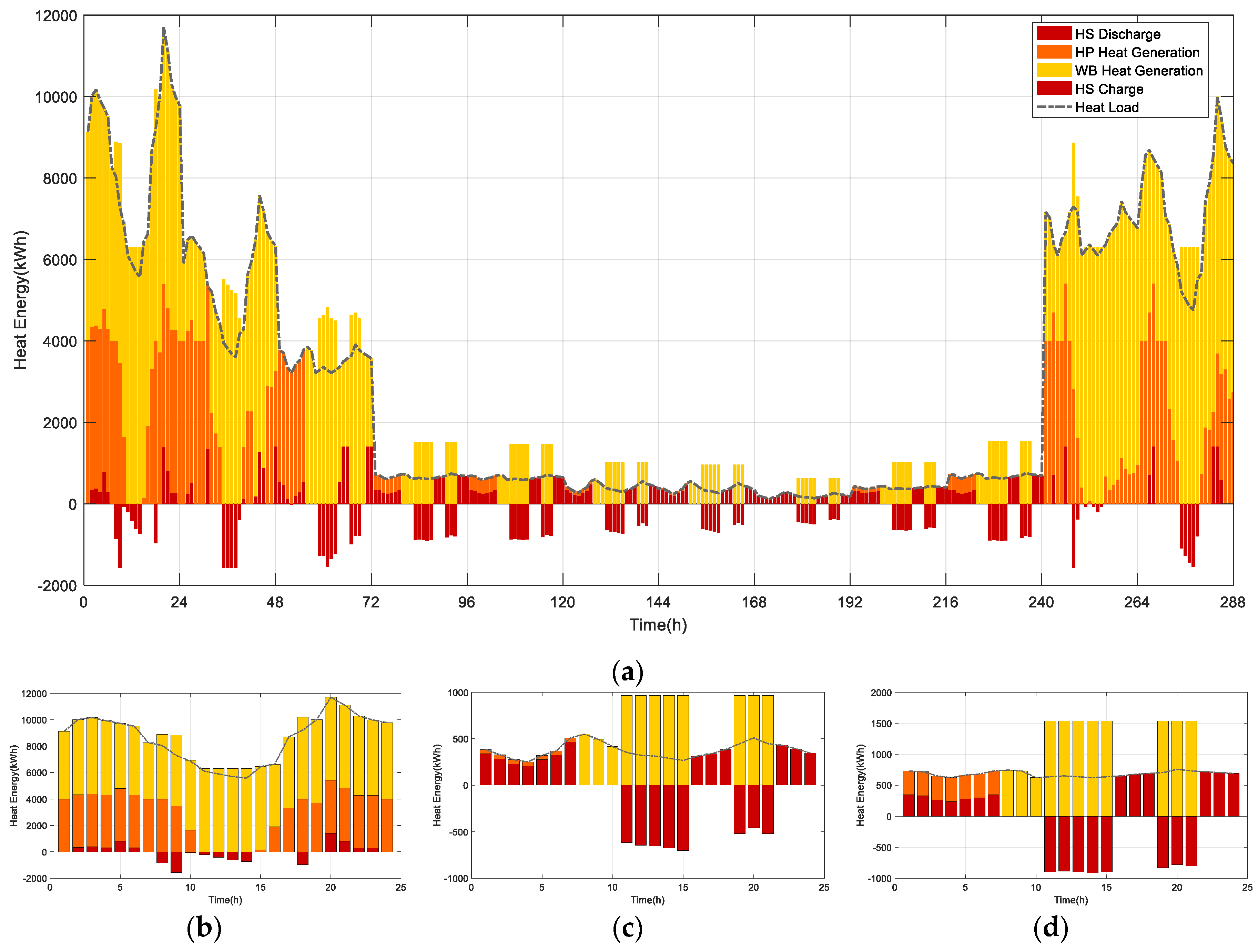
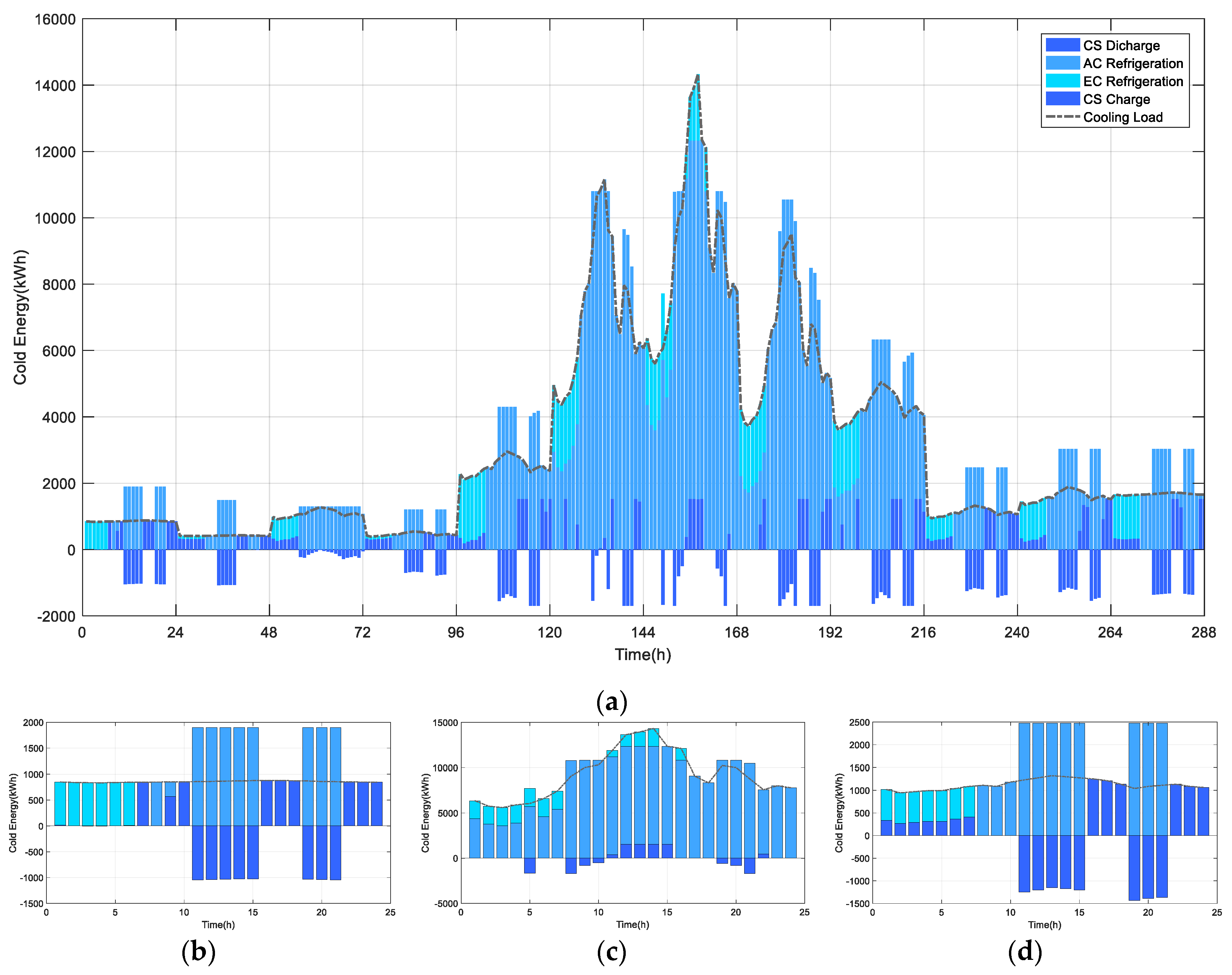

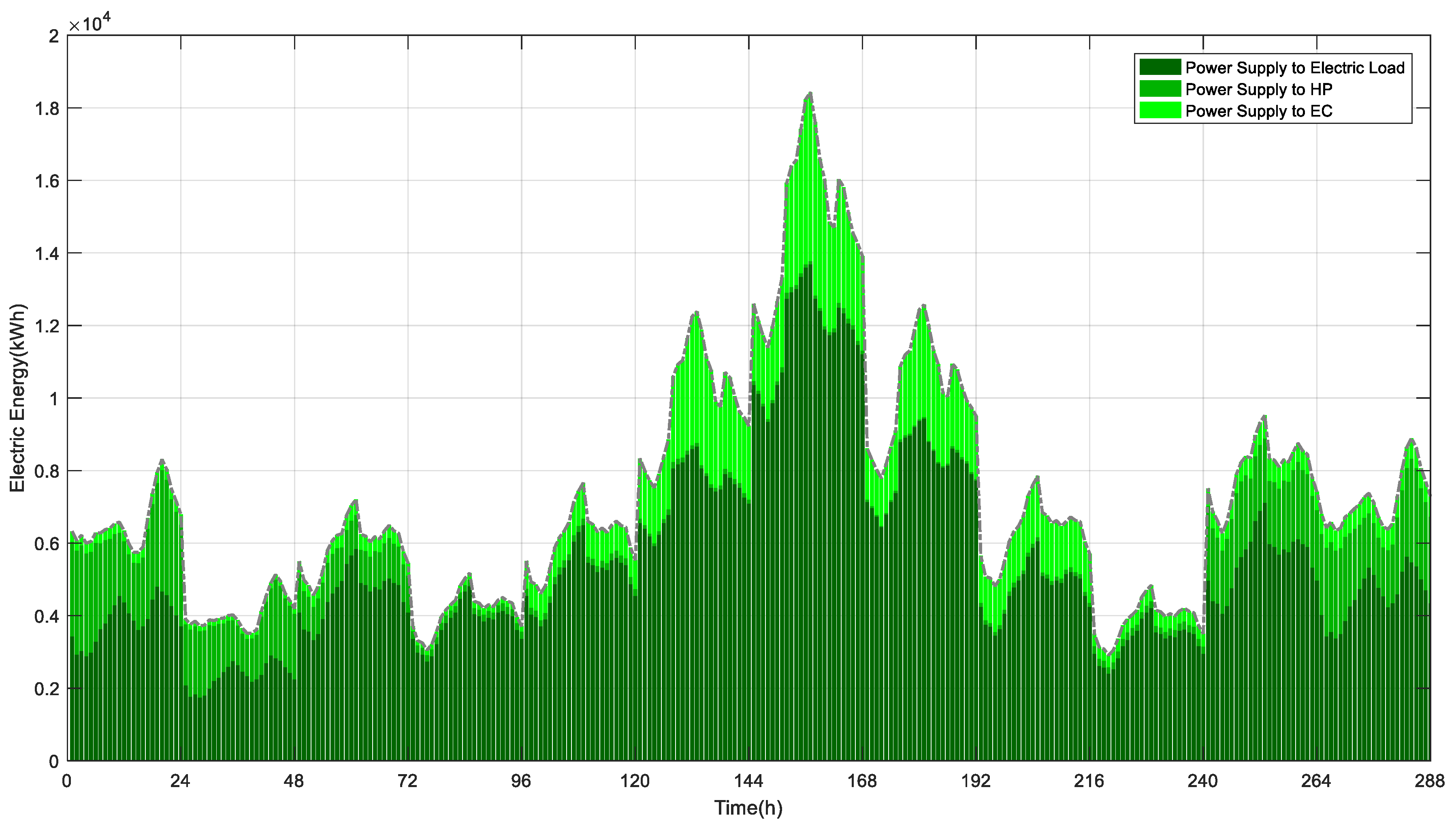

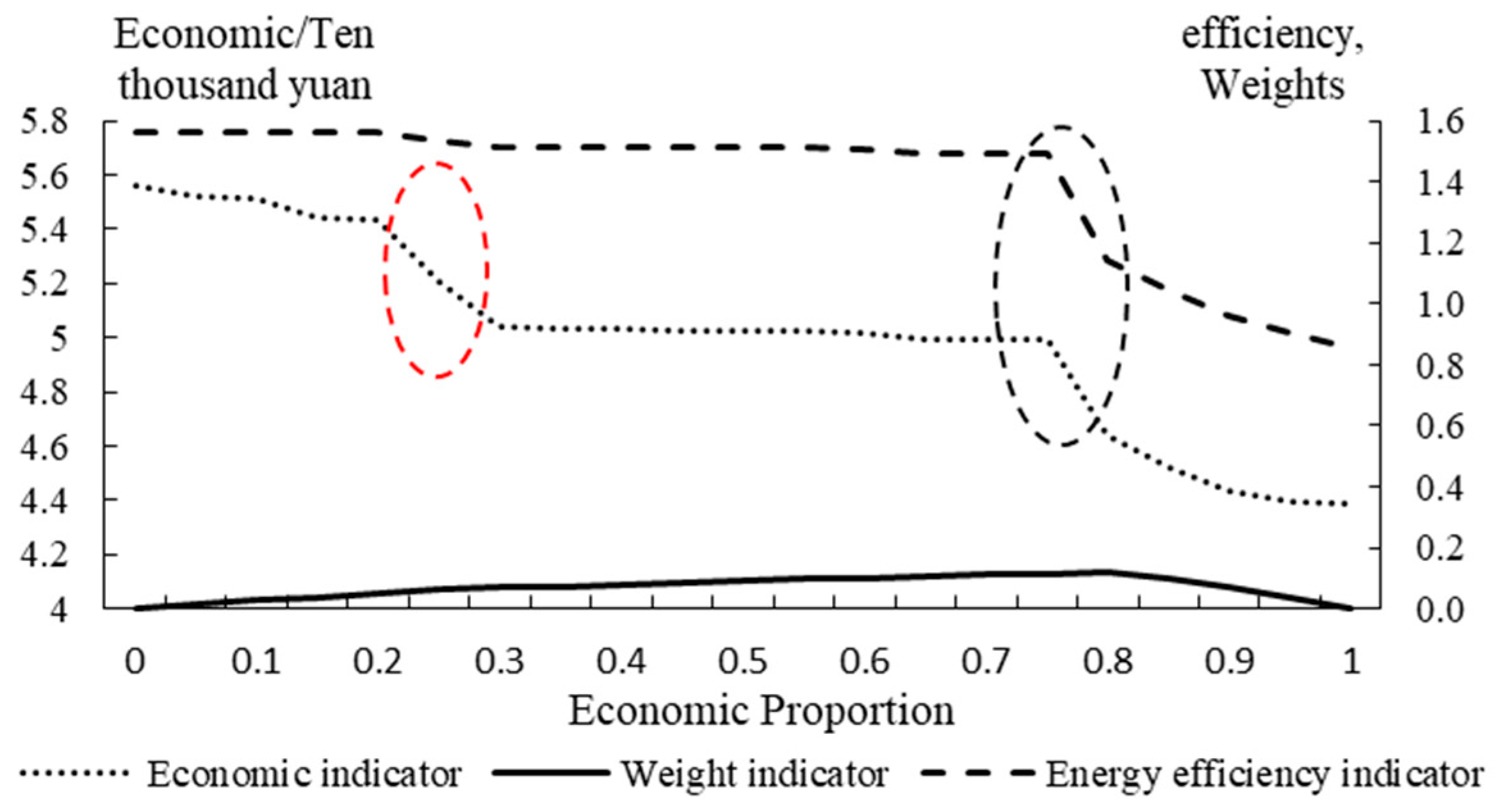

| Aims | Number of Installed Devices | Target Value | |||||||||||
|---|---|---|---|---|---|---|---|---|---|---|---|---|---|
| GT | ICE | P2G | WB | HP | GB | EC | AC | ES | TS | CS | C (Ten Thousand Yuan) | ηeu | |
| Economy | 1(4#) | 0 | 0 | 7 | 2 | 0 | 2 | 4 | 309 | 62 | 67 | 4385.18 | 0.853 |
| 0 | 0 | 0 | 0 | 6 | 0 | 15 | 0 | 0 | 0 | 0 | 5560.28 | 1.564 | |
© 2019 by the authors. Licensee MDPI, Basel, Switzerland. This article is an open access article distributed under the terms and conditions of the Creative Commons Attribution (CC BY) license (http://creativecommons.org/licenses/by/4.0/).
Share and Cite
Yu, Z.; Yang, X.; Zhang, L.; Zhu, Y.; Xia, R.; Zhao, N. Optimal Configuration of Integrated Energy System Based on Energy-Conversion Interface. Appl. Sci. 2019, 9, 1367. https://doi.org/10.3390/app9071367
Yu Z, Yang X, Zhang L, Zhu Y, Xia R, Zhao N. Optimal Configuration of Integrated Energy System Based on Energy-Conversion Interface. Applied Sciences. 2019; 9(7):1367. https://doi.org/10.3390/app9071367
Chicago/Turabian StyleYu, Zicong, Xiaohua Yang, Lu Zhang, Yongqiang Zhu, Ruihua Xia, and Na Zhao. 2019. "Optimal Configuration of Integrated Energy System Based on Energy-Conversion Interface" Applied Sciences 9, no. 7: 1367. https://doi.org/10.3390/app9071367
APA StyleYu, Z., Yang, X., Zhang, L., Zhu, Y., Xia, R., & Zhao, N. (2019). Optimal Configuration of Integrated Energy System Based on Energy-Conversion Interface. Applied Sciences, 9(7), 1367. https://doi.org/10.3390/app9071367





